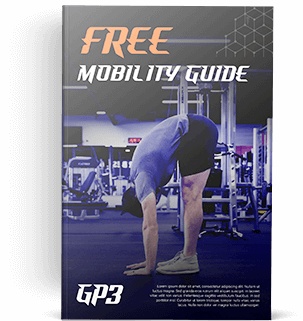Key Points:
1. We often subconsciously treat putting up with intensely difficult situations as a badge of honor.
2. But, despite our ability to handle hugely stressful, painful, or challenging situations, we often show a surprising lack of tolerance for mild discomfort.
3. Reversing this dynamic can be a huge key to increased health and happiness.
Estimated Reading Time: 6-12 minutes
It’s been my observation that many people have a disproportionate tolerance for intense levels of pain and stress, yet a surprisingly low one for discomfort. Basically, we’re uncomfortable being uncomfortable.
Reading this, you might think to yourself, “No ****.” We’re not supposed to like it. That’s why it’s called discomfort.”
On the face of it, I agree. Discomfort isn’t “fun.” But, it can be incredibly informative, especially if we’re willing to learn from it rather than run from or ignore it. Now, I’ll readily acknowledge that this is much easier said than done. Like with all endeavors, it takes practice. We can’t reasonably expect to be great at handling discomfort on our first few tries.
Also, let me be clear, I’m not talking about masochistic pain competitions or engaging in dangerous, harmful pursuits. I’m referring to temporary bouts of non-life-threatening discomfort that we’d typically rather ignore or be done with as quickly as possible.
Here are some examples:
- Working 60+ hour work weeks for an incredibly demanding boss
- But…avoiding challenging emotions like guilt or insecurity with even more work
- But…avoiding challenging emotions like guilt or insecurity with even more work
- Completing a marathon even though your ankle started hurting four weeks before the race
- But…not sticking to a daily 5-minute mobility routine
- But…not sticking to a daily 5-minute mobility routine
- Completing a 7-day juice fast
- But…treating hunger during non-fasting days as a 5-alarm emergency
Recently, I’ve been able to see this tendency firsthand. While helping a fellow coach answer questions and check form videos in his online coaching courses, I’ve interacted with dozens of people who have been in chronic pain for years.
I’ve been repeatedly surprised by two things. First, the number of people who have been dealing with incredibly painful conditions for months to years, who just suck it up and live with it. Second, the number of people (often the same!) who are alarmed by a bit of soreness or difficulty in performing a new exercise.
It’s incredibly common for people to ask questions like, “After yesterday’s workout, my ______ muscle is super sore! How do I get rid of the soreness quicker?” I do my best to deliver this information mores sensitively, but in short, you can’t. You can do the things you already know, like prioritizing sleep, hydration, and protein intake, but that’s it. Our bodies need time to sort out the intentional tissue damage we cause by doing workouts. In the meantime, we may just have to be a little bit uncomfortable.
This too, shall pass.
I think it speaks to our discomfort with discomfort, particularly new discomfort, that we want to “get rid” of these mild to moderately uncomfortable sensations right away. Let’s use a hypothetical example here. Based on true events, but no particular person.
Hypothetical Human Hank here runs four days per week, for a weekly total of 20 miles. On most days, his feet and ankles start to hurt after two miles, but he keeps going. He does this every single week. But, after starting his new workout program, he urgently wants to know how to “get rid of” the soreness from a workout he finished 12 hours ago.
Something doesn’t add up. Running despite foot and ankle pain for multiple miles every week seems objectively worse than post-workout soreness, right? Maybe it’s not possible to be objective here. I acknowledge that it is not fair of me to try to judge someone else’s personal experience in this way, so I probably owe Hypothetical Human Hank an apology here. I’m sorry, my dude. It simply puzzles me that we often seem so much more willing to put up with intensely stressful or painful situations than mild ones.
That said, I think I may know a reason why.
Doing something like completing a marathon or a 7-day fast is seen as a noteworthy accomplishment. Completing your 5-minute mobility routine is not. Nor is feeling mildly hungry, checking in with your body to see if you truly need food, and deciding to wait 90 minutes until lunchtime rather than reaching for a snack.
The first two examples are seen as impressive and worth sharing. The latter two are not, even though mastering mild hunger is a crucial skill. If someone says, “Wow, you’re in great shape! What’s your secret?” Which answer sounds better? “I run 5 miles before work each morning!” Or, “I do 5 minutes of mobility exercises before work each morning!” No prizes for guessing which one most people would decide to humble brag about on social media.
Look, I don’t want to imply that we only put up with these things to impress others. I don’t think we’re that shallow and insecure. Much more often, we do it to create or preserve an identity. We do it to feel better about ourselves in comparison to others. “I’m the type of person who does hard things others won’t.” “I can finish this grueling challenge without complaining.” To use another common example, we see this all the time when it comes to the American cultural obsession with work.
It would be a rare person who comes right out and explicitly says, “I work harder than you.” Instead, there’s a subtle one-upmanship often communicated via statements like, “Yeah, I haven’t really had time for a vacation. I’ve been working 60 hour weeks for the last six months.” Again, this is borne of completely understandable tendencies. We all want to feel important, or like the work we’re doing is valuable and vital. Plus, there’s something quite noble about making sacrifices for a worthy cause. To a point, of course.
Two Uncommon Identities
I’d like to digress for a moment by discussing two identities that most people don’t hold for themselves: “professional athlete” and “avid meditator.” On the face of it, these two labels might not have much in common, but they share a crucial similarity.
In a previous post, I mentioned the book Atomic Habits, by James Clear. When discussing truly elite performers, he highlights something that sets “the greats” apart. Initially, it sounds odd, but ultimately makes a ton of sense. He cited their ability to tolerate boredom. Repeating basic skills over and over and over can get old, fast. However, particularly for the professional athlete, putting your reps in is undeniably crucial if you want to be able to perform under pressure.
So, one of the key traits that separates the great from the merely good is the ability to suck it up, set boredom aside, and keep metaphorically shooting free throw after free throw long past the point when it stopped being fun.
Luckily, we can examine that literal example here. Only four players in NBA history have a career free throw percentage of 90% or higher: Steph Curry, Steve Nash, Mark Price, and Rick Barry. Three of those guys are comfortably considered some of the best to ever play the game, and even the least-accomplished name on that list, Mark Price, was a 4-time All-Star. The other three all won at least one MVP or Finals MVP award, and have been or most certainly will be inducted into the Hall of Fame. The point is, you can’t become this skilled at something without an ability to make yourself do it even when it’s not fun or glamorous.
And here’s how that relates to meditation.
Modern science and spiritual traditions from all over the world agree. Meditation is one of the best practices available for your mental, physical, emotional, and existential well-being. You can also practice it basically anywhere, at any time, in any situation. And yet, most people don’t do it. Why?
Well, first, there are a great deal of misconceptions about what it is and isn’t. I plan to cover this in much more detail in next week’s post. But for now, suffice it to say that it doesn’t matter which physical position you choose for meditation, and the aim is most definitely not to block out all thoughts.
So, with that in mind, meditation feels and looks a great deal like sitting there and doing nothing.
On the face of it, that’s one of the easiest things to “do,” since you don’t actually need to do… anything. So, why do so many of us have such a hard time with it? Beyond the above misconceptions, which do indeed derail many people, it’s been my experience that most of us have a hard time “doing nothing.”
Today’s culture’s extreme focus on productivity certainly doesn’t help. We’re led to believe that even in leisure, we must be constantly improving at a hobby, traveling the world and posting beautiful pictures for validation, or engaging in a side hustle to make more money. So, sitting still and doing nothing feels like a waste of time and is “boring.”
But, here we are, back at the matter of handling boredom. If you can literally sit through meditation consistently enough to make it a habit, you’ll see how much it will benefit you and even others with whom you come into contact.
Final Word on Uncomfortable Feelings
I saw an interesting thought experiment online the other day regarding emotional eating. The person speaking said, “If your child was upset because they lost their favorite toy, would you simply give them a cookie and hope they forgot about their negative feelings? No, right? Well, that’s exactly what you’re doing when you engage in emotional eating. It’s like you’re saying to yourself, ‘You’re not allowed to feel these feelings. Have some pizza instead!’”
I found this incredibly insightful.
In general, we as humans are excellent at finding ways to avoid uncomfortable feelings, and pretty terrible at facing and simply sitting with them. It’s not really our fault, though. How many of us were taught healthy strategies (like meditation) for dealing with discomfort? Very few. Further, how many of us know what to do if we use such a strategy (like meditation), and uncomfortable feelings actually bubble up to the surface? What then?
This piece has gotten long enough, so “What then?” is going to be the subject of next week’s musings. We’ll dive deeper into those meditation misconceptions so that we can talk about “befriending discomfort.” In the meantime, start to notice your own patterns. In which areas of your life do you put up with a ton of stress or pain, and in which ones does mild discomfort make you want to run screaming to the cookie jar?
What are you running from? Be courageous and have a look.
In the meantime, before you go, I’d love to hear from you! Have you thought about this before? Which areas of your life do you notice that you put up with high levels of stress or pain? Reply to this email and let me know!

